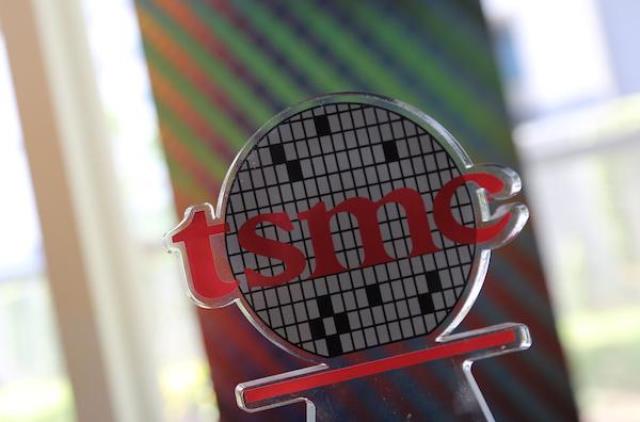Taiwan Semiconductor Manufacturing (TSMC), the world’s leading contract chipmaker and a key supplier for giants like Apple and Nvidia, has projected over 20 percent revenue growth in 2024.
 The forecast is attributed to the surging demand for high-end chips utilized in artificial intelligence (AI) applications, even in the face of sluggish sales in the smartphone and electric vehicle sectors across the broader industry.
The forecast is attributed to the surging demand for high-end chips utilized in artificial intelligence (AI) applications, even in the face of sluggish sales in the smartphone and electric vehicle sectors across the broader industry.
TSMC’s CEO, C.C. Wei, emphasized the pivotal role the company plays in enabling AI applications, stating, “We are a key enabler for AI applications. So far today, everything you saw for AI comes from TSMC.” This declaration follows the announcement of a fourth-quarter net profit that surpassed market expectations.
The demand for advanced packaging remains exceptionally strong, with TSMC struggling to meet the capacity needed to support customers, a trend expected to persist into the next year, according to Wei. However, Wei expressed concerns about potential over-capacity in mature nodes within the industry as a whole.
TSMC unveiled plans to expand its global manufacturing footprint. Construction at its fab plant in Germany is slated to commence in the fourth quarter of this year. Additionally, TSMC is deliberating on the technology node to be implemented at a second fab in Arizona. A first fab in Japan is set to open next month with volume production starting in the fourth quarter. The company is also exploring the possibility of constructing a second factory in Japan.
Capital spending for the year is projected to be between $28 billion and $32 billion, consistent with 2023. TSMC’s capital expenditures on a consolidated basis reached US$5.24 billion in Q4 2023 and amounted to a total of US$30.45 billion for the entire year.
TSMC aims to enhance production in its home base of Taiwan and is contemplating building a third fab in the southern city of Kaohsiung. If realized, all three fabs in Kaohsiung will focus on advanced 2-nanometer chips, driven by heightened demand in high-performance computing and smartphones.
Wendell Huang, TSMC’s Chief Financial Officer, attributed the fourth-quarter success to the continued ramp-up of their industry-leading 3-nanometer technology. While acknowledging the seasonality impact on the smartphone business in the current quarter, Huang highlighted the strength in the high-performance computing segment, including AI chips.
During Q4 2023, TSMC experienced a notable sequential revenue growth of 14.4 percent, attributing the boost to the deployment of its 3-nanometer technology. The 3nm process technology alone contributed 15 percent to the total wafer revenue, while the 5nm and 7nm technologies accounted for 35 percent and 17 percent, respectively. Advanced technologies (7nm and below) collectively made up 67 percent of the total wafer revenue.
Examining the revenue distribution by platform, High-Performance Computing (HPC) and Smartphone sectors jointly represented 43 percent of the net revenue. Internet of Things (IoT), Automotive, Data Center Enterprise (DCE), and other platforms each contributed 5 percent, 5 percent, 2 percent, and 2 percent, respectively. Sequentially, revenue from HPC, Smartphone, and Automotive increased by 17 percent, 27 percent, and 13 percent, respectively, from Q3 2023. In contrast, revenue from IoT, DCE, and other platforms experienced declines of 29 percent, 35 percent, and 16 percent, respectively.
Geographically, TSMC’s revenue was predominantly derived from customers in North America, constituting 72 percent of the total net revenue in Q4 2023. Revenue from China, Asia Pacific, Japan, and EMEA (Europe, Middle East, and Africa) contributed 11 percent, 8 percent, 5 percent, and 4 percent, respectively.
On an annual basis, TSMC reported that the 3nm process technology contributed 6 percent to the total wafer revenue in 2023, while the 5nm and 7nm technologies accounted for 33 percent and 19 percent, respectively. Advanced technologies (7nm and below) represented 58 percent of the total wafer revenue, reflecting a growth from 53 percent in 2022.
Analyzing revenue by platform for the entire year, there were declines of 8 percent, 17 percent, 16 percent, and 6 percent in the Smartphone, IoT, DCE, and Other categories, respectively, compared to 2022. Notably, HPC maintained stability, while the Automotive sector witnessed a significant 15 percent increase from the previous year.
In terms of geographic distribution for the full year 2023, North America continued to be a major contributor, accounting for 68 percent of the total net revenue. China, Asia Pacific, Japan, and EMEA contributed 12 percent, 8 percent, 6 percent, and 6 percent, respectively.
